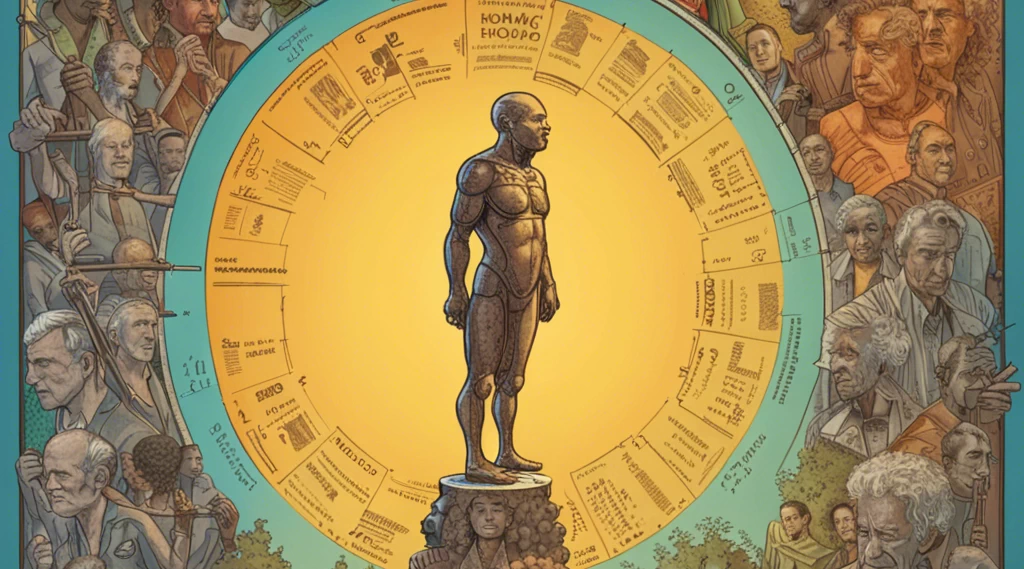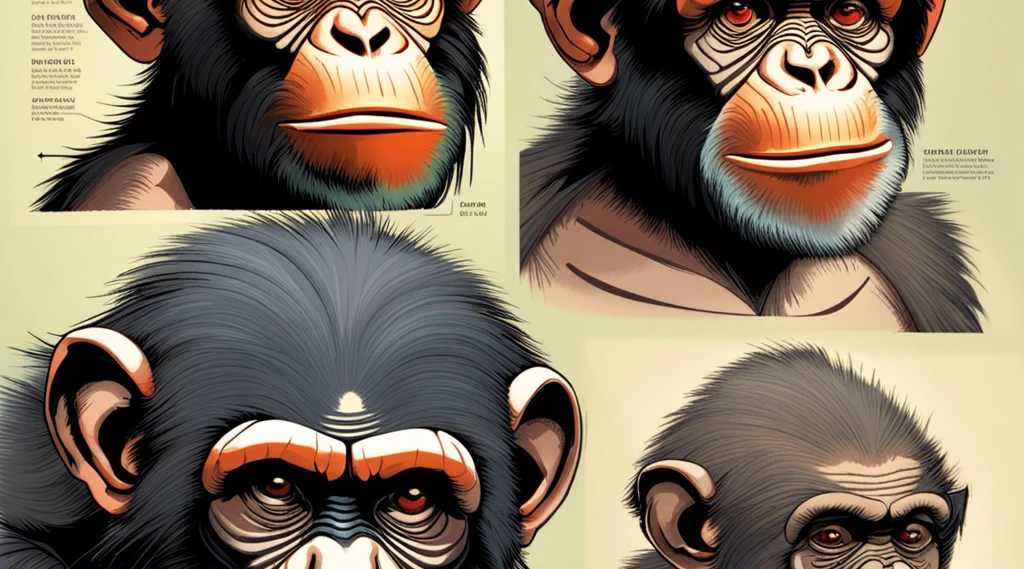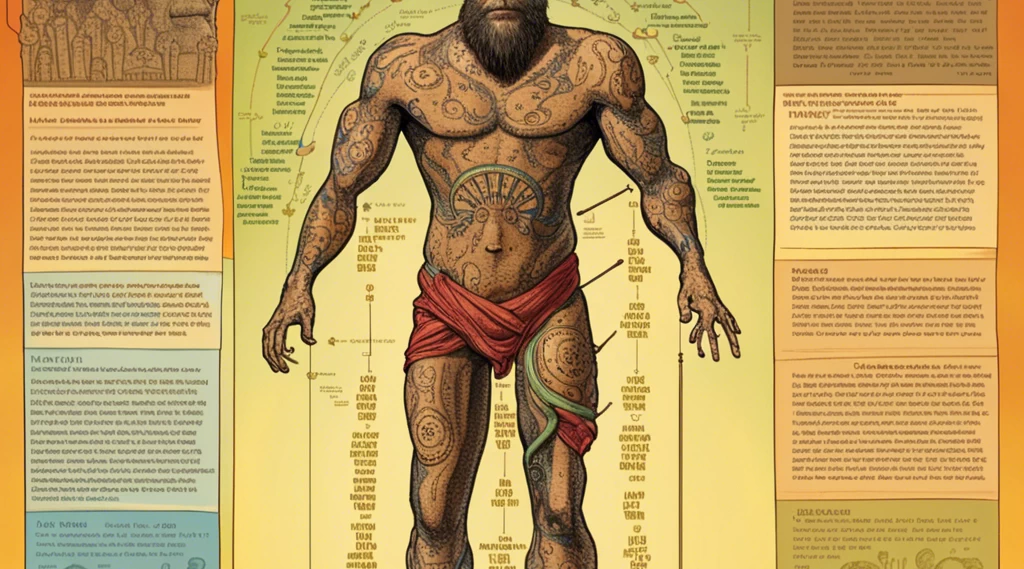– Sapiens & The Third Chimpanzee
In the realm of non-fiction literature, few books have captivated readers and provided profound insights into the nature of humanity like “Sapiens: A Brief History of Humankind” by Yuval Noah Harari and “The Third Chimpanzee: The Evolution and Future of the Human Animal” by Jared Diamond. Both works delve deep into the origins, history, and characteristics of Homo sapiens, shedding light on our evolutionary journey and offering compelling perspectives on our place in the world.
“Sapiens” takes us on a sweeping narrative from the emergence of Homo sapiens in Africa to the present day, examining how our species has managed to dominate the planet. With meticulous research and engaging storytelling, Harari explores the cognitive, social, and technological advancements that distinguish us as a species, often challenging conventional wisdom.
On the other hand, “The Third Chimpanzee” delves into the similarities and differences between humans and our closest living relatives, chimpanzees and bonobos. Diamond embarks on an exploration of human evolution, highlighting the traits that make us unique while also examining the darker aspects of our behavior. He offers thought-provoking theories on why certain events unfolded throughout history and how they continue to shape our future.
While both books explore similar themes within the framework of human evolution, they adopt different approaches and emphasize distinct aspects of our species’ development. In this comparative study, we will examine the strengths and weaknesses of each work, analyze their methodologies, evaluate the accuracy of their claims, and ultimately assess the impact these books have had on our understanding of ourselves as Homo sapiens.
Through this comparative analysis, we aim to gain a comprehensive understanding of the complex tapestry of human origins and behavior as presented in “Sapiens” and “The Third Chimpanzee.” By critically examining their content, structure, and overarching themes, we hope to unravel the intricacies of our existence and uncover new insights into the nature of humanity.
Summary of Two Books
Sapiens
Sapiens provides an expansive and thought-provoking exploration of human history, offering a broad understanding of our species’ origins, development, and impact on the world. Written by renowned historian Yuval Noah Harari, this book takes readers on a captivating journey through time, from the emergence of Homo sapiens to the present day.
Harari begins by delving into the cognitive revolution, roughly 70,000 years ago, when humans experienced a transformation in their ability to think and communicate through language. This revolution allowed humans to form complex social structures, cooperate in large groups, and create shared myths and beliefs that became the foundation for cultures and civilizations.
The author then discusses the agricultural revolution, which occurred around 12,000 years ago. This shift from a hunter-gatherer lifestyle to settled farming communities brought about significant changes in human society, including the rise of cities, the development of organized religions, and the formation of hierarchical systems of power.
Moving into the modern era, Harari examines the scientific and industrial revolutions, highlighting how these periods led to unprecedented advancements in technology, medicine, and global interconnectedness. He explores the consequences of these revolutions, such as the ecological impact on the planet, the creation of societal inequalities, and the continuing struggle for human rights and equality.
Throughout Sapiens, Harari presents thought-provoking ideas and challenges many widely held assumptions about human nature, exploring topics such as the importance of storytelling, the impact of myths and religion, the concept of money, and the influence of artificial intelligence on the future of humanity.
By offering a grand narrative of human history, Sapiens encourages readers to contemplate the trajectory of our species and critically examine the choices and ideologies that shape our present and future. It aims to provoke deep reflection on what it truly means to be human and how our actions have shaped the world in which we live.

The Third Chimpanzee
The Third Chimpanzee” by Jared Diamond explores the fascinating connections between humans and our closest relatives, the chimpanzees. Diamond argues that humans are not just another species of great ape but rather a distinct third species of chimpanzee. He investigates the evolutionary journey of Homo sapiens and explores various aspects of human behavior, biology, and culture through a scientific lens.
The book begins by examining the similarities and differences between humans and other primates, highlighting the shared genetic material and behaviors that link us to chimpanzees. Diamond explains how our DNA is over 98% identical to that of chimpanzees and bonobos, emphasizing the small genetic distance between us.
Diamond then delves into human evolution, discussing the factors that led to our divergence from other primates and the emergence of Homo sapiens as the dominant species on Earth. He explores topics such as bipedalism, language development, the use of tools, and our unique ability for symbolic thought.
Furthermore, “The Third Chimpanzee” analyzes several controversial subjects, including sexuality, art, music, and the origins of genocide. Diamond explores the underlying evolutionary explanations for these complex behaviors, shedding light on their adaptive significance or biological origins.
In addition to our past, Diamond also examines the present and future of humanity. He discusses pressing issues such as environmental degradation, climate change, overpopulation, and the potential consequences of our actions. The author urges readers to recognize the importance of long-term thinking and responsible decision-making to ensure a sustainable future.
Overall, “The Third Chimpanzee” provides an engaging exploration of human evolution, behavior, and the challenges we face as a species. Through a combination of scientific evidence and thought-provoking analysis, Diamond offers a broader perspective on what it means to be human and our relationship with the natural world.
Comparison Between Two Books
Similarities about Human History
Sapiens and The Third Chimpanzee are both thought-provoking books that delve into the history of Homo sapiens and explore our shared past. While Sapiens, written by Yuval Noah Harari, offers a comprehensive overview of human history from ancient times to the present, The Third Chimpanzee, authored by Jared Diamond, focuses on the biological and cultural evolution of humans. Let’s explore some of the similarities in their portrayals of human history:
Evolutionary origins:
Both books examine the evolutionary roots of Homo sapiens. They discuss how humans share a common ancestry with other primates, particularly the chimpanzees, and highlight the genetic similarities between us.
Early human societies:
Both authors explore the transition from hunter-gatherer societies to settled agricultural civilizations. They delve into the challenges and transformations associated with these changes, including the development of complex social structures, technological advancements, and the impact on human health and well-being.
Impact on the environment:
Sapiens and The Third Chimpanzee emphasize how humans have significantly impacted the natural world throughout history. They explore how our species has shaped ecosystems, caused species extinction, modified landscapes, and fundamentally altered Earth’s biodiversity.
Cultural developments:
These books analyze the progression of human culture, including the development of language, art, religion, and science. They highlight how cultural innovations have been crucial in shaping human societies and separating us from other species.
Cooperation and violence:
Both books examine the dualistic nature of human behavior. They discuss how humans possess the capacity for incredible cooperation, allowing us to form large-scale societies and accomplish remarkable feats. Simultaneously, they acknowledge the prevalence of violence throughout human history, exploring its causes, consequences, and patterns.
Global interconnectedness:
Sapiens and The Third Chimpanzee highlight the increasing interconnectivity and interdependence of human societies over time. They discuss the spread of ideas, technology, diseases, and the formation of complex networks that have shaped the world we live in today.
Future challenges:
Both books raise concerns about the future of humanity. They explore the potential consequences of our actions on a global scale, such as climate change, nuclear weapons, and the impact of technological advancements. They prompt readers to reflect on the choices we make and the collective responsibility we bear for shaping our shared future.
While there are differences between these books in terms of their approach and focus, they converge in many areas, offering valuable insights into the history of Homo sapiens and the factors that have influenced our development as a species.

Divergence in Human History
Sapiens by Yuval Noah Harari and The Third Chimpanzee by Jared Diamond are both thought-provoking books that explore the history of humanity. While there are several similarities in their subject matter, they also diverge in certain aspects of human history. Here are some key divergences between the two books:
Approaches to Human History:
Sapiens: Harari focuses on the cognitive and cultural developments that shaped human history. He emphasizes the significance of shared myths, social constructs, and cooperation in enabling humans to establish complex societies.
The Third Chimpanzee: Diamond takes a multidisciplinary approach, combining anthropology, biology, and genetics to explain different aspects of human behavior. He examines human evolution from a biological perspective and explores topics like language, art, sexuality, and agriculture.
Time Horizons:
Sapiens: Harari covers a vast expanse of time, spanning from the emergence of Homo sapiens around 300,000 years ago to the present day. He analyzes the major revolutions that transformed human societies, such as the cognitive, agricultural, and scientific revolutions.
The Third Chimpanzee: Diamond’s focus is not solely on human history but also on human evolution. He discusses the evolutionary divergence between humans and chimpanzees, exploring our shared genetic heritage and examining how our behaviors have evolved over millions of years.
Global Perspective vs. Geographic Focus:
Sapiens: Harari takes a global perspective, discussing the development of human cultures across continents and emphasizing the interconnectedness of civilizations. He examines the impact of globalization and the formation of global empires on shaping human history.
The Third Chimpanzee: Diamond pays more attention to specific geographic regions, highlighting how environmental factors played a role in shaping human history. He explores the histories of isolated communities, such as those in Australia, New Guinea, and the Americas, to shed light on regional differences.
Emphasis on Genetic Determinism:
Sapiens: Harari acknowledges genetic factors but focuses more on cultural and cognitive developments as the driving forces behind human history. He argues that humans have shaped their own destiny through collective beliefs and social constructs.
The Third Chimpanzee: Diamond places a stronger emphasis on genetics, exploring how our evolutionary heritage influences behaviors like language acquisition, sexual preferences, and the development of agriculture. He argues that understanding biology is crucial for comprehending human history.
While these books have divergent emphases and methodologies, they both contribute valuable insights into the complexities and nuances of human history. Their different perspectives complement each other and offer readers a more comprehensive understanding of our shared past.
Conclusion
Both “Sapiens” by Yuval Noah Harari and “The Third Chimpanzee” by Jared Diamond are highly regarded books that offer valuable insights into human history and evolution. While both books provide unique perspectives, it ultimately depends on your specific interests and what you hope to gain from reading.
“Sapiens” is known for its comprehensive overview of human history, covering a wide range of topics from the emergence of Homo sapiens to modern societies. Harari’s book explores how humans developed language, agriculture, religion, and technology, challenging conventional beliefs and offering thought-provoking ideas about our place in the world. If you’re interested in a broad historical narrative that encourages deep reflection on humanity, “Sapiens” is an excellent choice.
On the other hand, “The Third Chimpanzee” focuses more on the biological aspects of human evolution and compares them to our closest relatives, chimpanzees and bonobos. Diamond delves into topics such as the origin of language, art, agriculture, and the factors that shaped human societies. This book offers a scientific viewpoint on human development and provides insights into the genetic connections between humans and other species.
Ultimately, the choice between the two books depends on your personal interests. If you prefer a broader historical perspective with philosophical implications, “Sapiens” may be more suitable. If you’re interested in a deeper exploration of the biological aspects of human evolution and comparative analysis with other species, “The Third Chimpanzee” could be the better fit. Regardless, both books offer significant value and can expand your understanding of human history and evolution.



